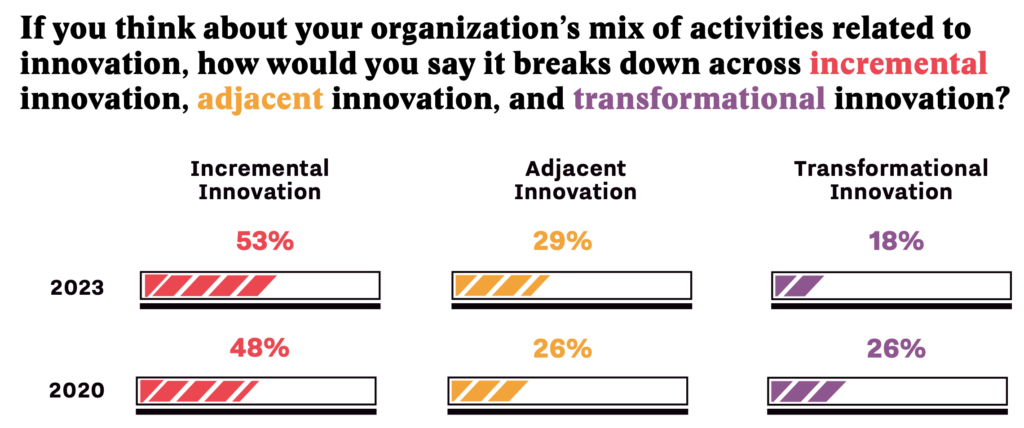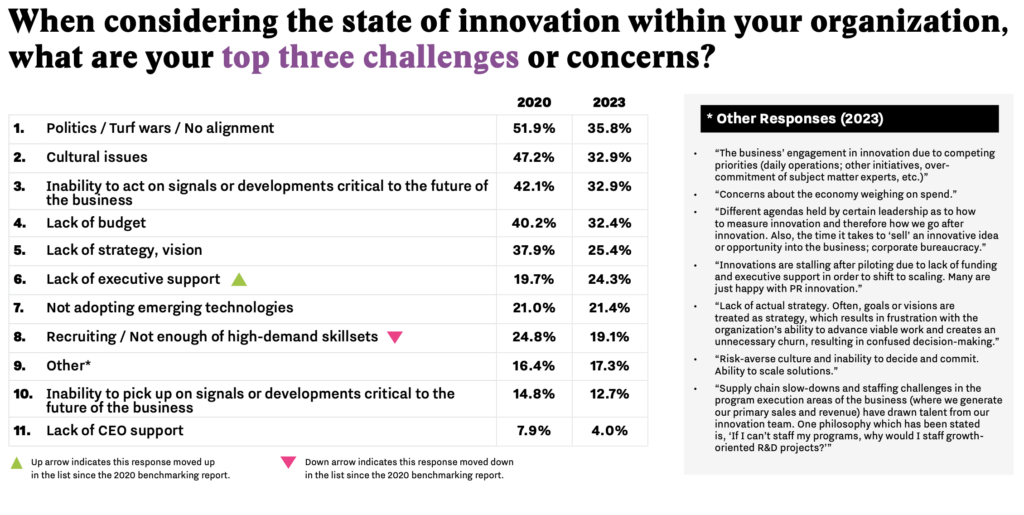Be Careful What You Wish For

GUEST POST from Robyn Bolton
A few weeks ago, a Google researcher leaked an internal document asserting that Google (and open AI) will lose the AI “arms race” to Open Source AI.
I’ll be honest: I didn’t understand much of the tech speak – LLM, LLaMA, RLHF, and LoRA are just letters to me. But I understood why the memo’s writer believed that Google was about to lose out on a promising new technology to a non-traditional competitor.
They’re the same reasons EVERY large established company loses to startups.
Congratulations, big, established industry incumbents, you’re finally innovating like Google!
(Please note the heavy dose of sarcasm intended).
Innovation at Google Today
The document’s author lists several reasons why “the gap is closing astonishingly quickly” in terms of Google’s edge in AI, including:
- “Retraining models from scratch is the hard path” – the tendency to want to re-use (re-train) old models because of all the time and effort spent building them, rather than start from scratch using newer and more flexible tools
- “Large models aren’t more capable in the long run if we can iterate faster on small models” – the tendency to want to test on a grand scale, believing the results are more reliable than small tests and drive rapid improvements.
- “Directly competing with open source is a losing proposition” – most people aren’t willing to pay for perfect when “good enough” is free.
- “We need them more than they need us” – When talent leaves, they take knowledge and experience with them. Sometimes the competitors you don’t see coming.
- “Individuals are not constrained by licenses to the same degree as corporations” – Different customers operate by different rules, and you need to adjust and reflect that.
- “Being your own customer means you understand the use case” – There’s a huge difference between designing a solution because it’s your job and designing it because you are in pain and need a solution.
What it sounds like at other companies
Even the statements above are a bit tech industry-centric, so let me translate them into industry-agnostic phrases, all of which have been said in actual client engagements.
- Just use what we have. We already paid to make it.
- Lots of little experiments will take too long, and the dataset is too small to be trusted. Just test everything all at once in a test market, like Canada or Belgium.
- We make the best . If customers aren’t willing to pay for it because they don’t understand how good it is, they’re idiots.
- It’s a three-person startup. Why are we wasting time talking about them?
- Aren’t we supposed to move fast and test cheaply? Just throw it in Google Translate, and we’ll be done.
- Urban Millennials are entitled and want a reward. They’ll love this! (60-year-old Midwesterner)
How You (and Google) can get back to the Innovative Old Days
The remedy isn’t rocket (or computer) science. You’ve probably heard (and even advocated for) some of the practices that help you avoid the above mistakes:
- Call out the “sunk cost fallacy,” clarify priorities, and be transparent about trade-offs. Even if minimizing costs is the highest priority, is it worth it at the expense of good or even accurate data?
- Define what you need to learn before you decide how to learn it. Apply the scientific method to the business by stating your hypothesis and determining multiple ways to prove or disprove it. Once that’s done, ask decision-makers what they need to see to agree with the test’s result (the burden of proof you need to meet).
- Talk. To. Your. Customers. Don’t run a survey. Don’t hire a research firm. Stand up from your desk, walk out of your office, go to your customers, and ask them open-ended questions (Why, how, when, what).
- Constantly scan the horizon and seek out the small players. Sure, most of them won’t be anything to worry about, but some will be on to something. Pay attention to them.
- See #3
- See #3
Big companies don’t struggle with innovation because the leaders aren’t innovative (Google’s founders are still at the helm), the employees aren’t smart (Google’s engineers are amongst the smartest in the world), or the industry is stagnating (the Tech industry has been accused of a lot, but never that).
Big companies struggle to innovate because operating requires incredible time, money, and energy. Adding innovation, something utterly different, to the mix feels impossible. But employees and execs know it’s essential. So they try to make innovation easier by using the tools, processes, and practices they already have.
It makes sense.
Until you wake up and realize you’re Google.
Image credit: Unsplash
![]() Sign up here to join 17,000+ leaders getting Human-Centered Change & Innovation Weekly delivered to their inbox every week.
Sign up here to join 17,000+ leaders getting Human-Centered Change & Innovation Weekly delivered to their inbox every week.











